I'll be posting regularly and linking to it here, if you care to follow the new adventures of EAT...I mean CTEK Arts...as we head North of the Liffey for another opening, another show in Dublin.
|
And to my annually updated Ireland blog, which you can find here.
I'll be posting regularly and linking to it here, if you care to follow the new adventures of EAT...I mean CTEK Arts...as we head North of the Liffey for another opening, another show in Dublin.
0 Comments
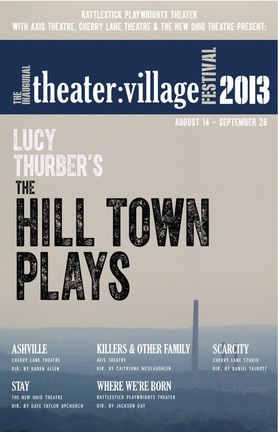 The Audacity of Repertory American playwrights are mostly itinerant workers. We have a piece done here…another one there…maybe someone gives a play we wrote a second production and we get a chance to see it in a different light. Or it gets a whole lot of readings in a bunch of places because putting on readings series is a way theaters can show they support new work (insert ironic quotations where you feel appropriate). In the checkerboard journey, it’s not often that a playwright can take a step back and get a sense of her work in one place and time. It’s not within the capacity (or interest) of most theaters to devote an entire season to one playwright’s work. But when they do (and hooray for Signature Theater for making it their mission) is to allow a playwright’s work to be put into an order and context and in such close proximity to itself that you can get an idea of the arc of his or her career, and what ideas they’ve continued to explore, and which ones they’ve worked through, and see the breakthoughs, and see what led up to them. Some years ago, I saw Jason Robards & Colleen Dewhurst led a huge cast in an alternating repertory of O’Neill’s “Long Day’s Journey” and “Ah! Wilderness.” I saw them back-to-back, and the contrast between the wished-for family and the dark portrait of the one he had was both memorable and heartbreaking. So it was with great interest I read about Rattlestick Theater's plan to produce the 5-play Hill Town cycle by Lucy Thurber. They committed a huge amount of time, effort, money, talent and what I am sure were unbelievably profound & complicated logistics to a body of work from a playwright who is hitting the meat of her career. So I bought my tickets (for a reasonable price, which showed they were serious about making it easy to see all of them), and sat down with my calendar. I saw the first 4 plays in about a 5-day stretch just after they started previewing, and the fifth last Sunday, and then “Killers & Other Family” again this week. I saw most of the plays fairly early in previews, which is when your theater friends say: “…come later, when we’re on our feet.” I like seeing the play come to life early on, and things people are still trying, before the performances get set, and maybe (for example) the door comes off the refrigerator and everyone has to deal with that along with remembering their lines and blocking. Each play, on its own, is worth seeing and can stand alone, but the power of all 5 together creates a kind of power and urgency that is many-faceted: you can’t divide the characters and their emotional lives from the place they come from, and a line or an action, or even a piece of food reverberates starts out in one play, is repeated in another, turns up again later on, depicted from a different distance, someone else’s point of view, as a symbol of something that was once important, and is now ordinary. You must understand that along with being a playwright, I am a theater geek, a nerd, a theater lover. I go to shows more than once if I really like them, and I almost always come away from plays, even the awful ones, with something to turn over in my mind on the way home: a moment, an actor I didn’t know before, a phrase or a theme that I can put in my collection. I’d seen three of the plays before in earlier versions/productions, as well as Thurber’s epic, “Monstrosity,” at 13P (which never would have been put on by a traditional theater, only one which made its playwrights its artistic directors) and the idea that I could see all of the plays in a short time, in order, seemed to me one of the most interesting things happening in American theater this season. 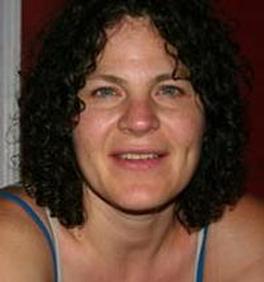 Why This is Important One of the reasons I like her work is that Thurber writes about class in America, often from the point of view of the working (and non-working) poor. She doesn’t make fun of her characters, or look down on them, or make them into stereotypes or caricatures, and she writes a lot of them, which few enough playwrights do in mainstream theater these days (and fewer women). Thurber persists in writing about the financially, emotionally and spiritually poor: her people often drink and drug because they’ve long since lost the ability to dream, and whose response to something unexpected or frightening is frequently violent. They can be dangerous one moment, loving the next, or both at the same time to a degree that whoever comes out of that environment can never completely leave it behind. (In "Monstrosity," a dystopian play with a cast of dozens, Thurber depicted an army of have-nots, led by a woman, conducting a guerilla war against a brutal regime, which pitted her against her own brother, and which showed how violence inevitably changes the people who first encounter it then embrace it). 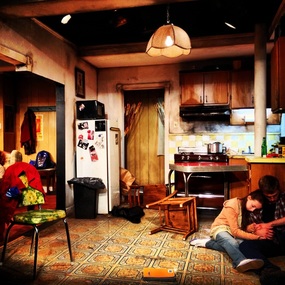 "Scarcity." "Scarcity." Now That’s a Narrative Arc! The Hill Town plays tell the journey of a girl over the course of some two decades. She’s called Rachel in the first and last plays, and also called Celia and Lizzie and Lilly. She has a brother called Billy, and depending on which play, a boyfriend named Jake, a cousin named Tony; Danny and Jeff are the brother and boyfriend she left behind on her journey. The men can be both protective and destructive. They want to take care of her, but they also want to own her. She does what she has to in order to survive, to keep them from hurting her, and to get them to protect her. Her body, her looks, her intellect are her currency, and she trades it for safety, or at least an escape from pain. Brother Billy, who leaves in the first play, promises to come back for Rachel, and in the last play, he does, when both of them have broken away from the country town in western Massachusetts where they grew up, and managed to educate themselves, but still keep running into what they can’t leave behind. The plays are character-driven, but the way the world is going pushes them one way and another. In, “Scarcity,” the first play, the mother, played by the exquisite Didi O’Connell works at the mall and cries a lot. Her face shows all the sadness of her life, and a dogged determination to somehow keep going. The father (Gordon Joseph Weiss) doesn’t work (except for an occasional logging job). Mostly he drinks. A man tells a woman to get him a beer within the first five minutes of four of these plays. They drink Rolling Rock and Bud Light and whiskey from the bottle. Their offspring are dependent on the erratic pair, though Billy (Will Pullen) is almost of an age to make a break for it. The play is set in 1992 (before welfare was “reformed”), so they do have food stamps. Not really enough to feed the family…but a cousin, who’s a cop, brings them groceries, even steak (though nothing comes without a price). It’s also a time when there’s a good public school that gives Billy a chance to use his considerable intelligence, attracting the attention of one of his teachers. She’s a born do-gooder, whose thesis was about poverty in America. Billy both needs her to escape, and can’t stand it when she commits the unforgivable sin of reminding him of his poverty. Rachel is too young to escape with Billy, and at the end, she knows she’s going to have to find her own way out. It’s a slightly different set of circumstances in “Ashville,” set in 1997, in which Celia, who’s a high school sophomore, lives with her mother (there’s no father in sight), and has a boyfriend, Jake, who stays overnight, and drives her to school, and sometimes keeps her mother’s boyfriends from pawing her. Jake’s cousin Joey hasn’t quite given up yet. He’s got a girlfriend, Amanda, that he’s crazy about. And they all hang out with the drug dealer next door, who plays his vinyl and talks about James Joyce, and proclaims himself a genius when he’s stoned. When Jake proposes to Celia, she knows this isn’t the way she needs to get out of the house, and tries to find a way to articulate it all to Amanda, who listens to her, and notices that she’s wearing new jeans. Celia’s attracted to Amanda, adding yet another layer of danger to it all. We’re in the new millennium, 2002, for “Where We’re Born,” in which Lilly returns to her hometown from her first semester in college. Her cousin Vin, who always looked out for her, lets her stay with him and his girlfriend Franky (who loves the jeans she’s wearing) because there’s no way she can stay with her mother. Vin’s buddies, Drew and Tony, drink and smoke with him, talk about getting laid, and don’t realize it as they make their world smaller and smaller. They are afraid of the “other”: immigrants and blacks and people who are different. They are mostly underemployed, except for some occasional logging gigs. A year or so later, they’d be talking about signing up for the military. In 2002, they’re creating a rhetoric that’s in full bloom today, driving a wedge between the classes, the races, Americans. At the start of the play, Lilly has just crossed to the other side by going away to college (where she stuns Vin with the fact that books cost “like $75"). In the town where she was born, she finds herself drawn to Franky, and it leads to an outcome in which her bridges are burned, and she can’t ever come back. Lizzie lives in New York City in 2009, when “Killers and Other Family” takes place. She’s working on her thesis (about poverty in America, after which, she will be an “authority”), which is due in two weeks. When her brother and ex arrive, Lizzie quickly finds out just how thin her veneer of civility and scholarship is. It’s sad, and ugly and raucous to see these two invaders vandalizing the world Lizzie’s made for herself. And ultimately, Lizzie has to choose between family and the man who loved her and abused her and her current lover. Rachel is teaching at a liberal arts college in 2013 in the cycle's final play, "Stay." Her book of short stories, inspired by her own family, has made her name. Her novel is due in two weeks. Her drive and talent and survival skills have manifested as an alter ego/angel who supports her, warns her, and gives her advice. (In other words, she’s a writer). Rachel is alone and stuck, and seems to have stopped feeling. Billy, also grown up, and a lawyer, arrives on the scene, and serves her steak, and brings her a beer. Something has changed…and some things have not. The play ascends into fugues of magical realism, and they are earned. Billy and Rachel have to deal with the hard truths (and answering machine messages from their mother, still played by O’Connell), that they are both damaged people, damaged in a very specific way by their upbringing, as well as their ambition, and they are at a breaking point. The angel/alter ego gives Rachel an instruction when she most needs it, and while we don’t see what will happen, we might feel that there has been a change, that a cycle has been broken, that the broken might become whole. 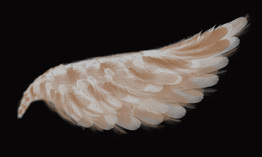 It’s Not Just a Job, It’s an Adventure My own alter ego is telling me to go to bed now, because it’s late and I have to be at work tomorrow. I have two plays going up between now and mid-October, and both have logistics issues that need to be addressed. I do not know where or when my next production after that is. I need to make sure I get my stuff out there. There are only so many slots in a season, only so many theaters. My angel is also telling me that it’s good and important for us – the audience, the theater lovers, the Americans – to see the complete story Lucy Thurber set out to tell. Who better to tell it? And who better than us to bear witness? I’m not entirely opposed to aging. As artists, for example, I think as our eyesight goes, our vision gets stronger. I feel as though there’s more room for memory, resonance, a greater palette of emotions that we can draw on when we write or see a play after a lifetime of taking a seat and waiting for the lights to go down. The colors are richer, deeper, the music more complex (and if you wore earplugs, you still have your hearing). When I was beginning in the theater, I’d go see a play as many times as I could (the only option in a town with a more limited theater scene than NYC). If I could get hold of a copy of a script, I’d read it and practically commit it to memory. Before I realized there were such things as writing workshops, I tried to take apart the scripts and see how they worked and figure out why the artist chose to do it just that way. All of this was part of my coming out…as an artist. I’m starting this on a bus heading down the Jersey Turnpike (on Pride Sunday, no less) on my way to see the last performance of a run of my play, “Grieving for Genevieve,” at the Venus Theater in Laurel, MD. The last time I missed a Pride Sunday in NYC was to see a reading of my play, “Grieving for Genevieve” in Chicago. 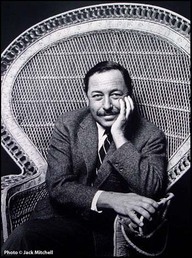 It’s been a wonderful month, indeed a wonderful year, for my theater life. I’ve had shows produced, I’ve seen some great shows, and it’s all just as alive to me and essential as it was when I was 24 and living in a tiny room at the Baptist Women’s Residence and second-acting the show every night at Mirror Rep. Though I do have a better apartment now. The sense memories came back strong last Monday when I went to see Tennessee Williams’s “The Two Character Play.” I’d been hoping to see it, both because it’s rarely been revived, as well as wanting to see Amanda Plummer onstage again. The first time I saw Plummer’s work was in “Agnes of God,” on Broadway, with her, Elizabeth Ashley and Geraldine Page. (I’ve written about that before...it was a “come to Jesus” moment). Even though I hadn’t seen a lot, I knew enough to realize that I was in the presence of three great actresses. Leafing through the playbill at “The Two Character Play,” I realized I’ve seen Amanda Plummer in most of her New York City appearances, from Glass Menagerie to Pygmalion. I think one of the reasons that at the end of his life, when Tennessee Williams went out of fashion, when it was okay for the intelligentsia to make fun of him and his work, to dismiss it, is at least partially because of a level of homophobia that was acceptable back then, and even now can be heard as an undertone if you listen carefully. If you read Christopher Bram’s wonderful book “Eminent Outlaws,” he traces a similar trajectory in Edward Albee’s reputation, in the reception of “Virginia Woolf” both before and after it was widely known the author was a gay man. Frank Rich can write elegiacally about his surrogate gay parent in New York magazine, but fairies were always fair game for theater critics. So it’s good to see him having a renaissance in that people are going back to the work and saying: hey, this is worth bringing back. These are things people need to hear again, and know again. When the play began, I heard Tennessee’s voice, strong & rich, and in different ways than in his earlier plays (probably the biggest critique that any writer faces: that This One is not The Same as the Last One). Along with his unique voice and ideas, I saw shadows of Beckett & Ionesco, and the artist wrestling with himself. As always, there was the shadow of his sister. We all have something we try to write, and write out, and there it is. I saw how Williams’s language has informed so much of American theater. Without Williams creating a voice in American theater, you’ve got…Miller (I will qualify this by saying “Post WWII mainstream theater in America”). Which is a much more judgmental place. I also realized the influence that Amanda Plummer has had on so many actors…they don’t have her mercurial quality, the way her voice does things, but they have taken cues from her unique style & energy. Brad Dourif more than held his own as her brother/foil/director/scene partner. I read Hilton Als’s critique in the New Yorker, and he felt that Dourif and the direction were not up to par with Plummer & Williams. I disagree, at least about Dourif (the lighting was too dark for me). Though I would like to see David Hyde Pierce take a shot at that part. (I’d also like to see DHP’s Cyrano, but don’t let me get sidetracked). We didn’t go out for drinks after because it was a Monday and we were really tired, and I’m just as glad, because I wanted to have my mind to myself on the way home. Think about certain moves and gestures, and phrases, and even costume pieces and all the things Williams was trying to say as he wrote and rewrote and rewrote. I realized the other day that since Williams was born in 1911, even if he hadn’t left us so suddenly and freakishly in ’83, he probably still wouldn’t be alive today. Well, he’d be 102.  Now I’m on the train to Philadelphia. But on that particular Monday a week ago, I was thinking about how satisfying the Williams play was in one way, and how satisfying a piece I’d seen two nights before had been in a completely different way. I’m talking about “Manna-Hata,” by Barry Rowell, which was presented by Peculiar Works Project in the upper regions of the James A. Farley Post Office. They had me at “partially gutted & abandoned upper floors of an old building.” And in the soon-to-be-destroyed/transformed space (it’s going to be a train station!) a company of 20 actors performed a very personal & deeply-felt history of the island that is still the center of the universe for many. (I, of course, moved to a borough in 1994). Still, it’s where I came when I came here, for things like theater and brilliant, crazy people who will put on a site-specific show in a marble building and say: hell yes, we can do shit like this in 2013 in what is either the end days of the American Republic, or a time when something new (which could be good or bad) is about to happen. I mean, even if you’re in the End Days, are you just supposed to wait for something bad to happen, or are you supposed to comment on what you see, and make people think a little bit, or laugh, or cry or walk while sweating past frosted glass doors and really nice sconces and molding? It’s been 300-plus years of power brokers and the people they want to break, businessmen who wipe out populations of natives, and crowds and mobs and riots where oppressed people get killed, and kill each other. And somewhere in there, little holes & corners where people drink and dream and write poems and plays. How can you not be thrilled all over again when Everett Quinton dances up and down a hall, wrapping peoples’ wrists in “caution” tape, Walt Whitman leads you through the miasma of history, and there’s Jane Jacobs singing, and Shirley Chisholm running for president, and a Lenni Lenape Indian reminding us who was there before before before. As long as we have people that smart and irreverent both fictional and real, I’ll still bet on us, despite the odds. And, of course, there are people who will find a way to produce a Tennessee Williams play that closed in a few days on Broadway in the 1970s and convince one of our great actors to come back to Manhattan and torment/comfort her brother/playwright to our edification and delight and soul’s satisfaction. The train is leaving Baltimore now.  I’ve been thinking these fond thoughts about New York from some 200 miles to the south, having attended the last performance “Grieving for Genevieve” in Laurel, MD. I’ve been fortunate enough to have had a fair amount of productions for an American playwright (a lot of which I’ve produced myself), so I can look back and say that this was the most fully-realized, best produced version of my work I’ve had a chance to see, some 200 miles from home – though in the same soil where the play grew. While I often bitch about the class system in American theater, I think it took someone with a similar background to mine, as in, having attended the same school, knowing the neighborhoods I was writing about, who the people were in the family I created, who is also a serious, rigorous artist, to create the production that I found so satisfying. In Deb Randall I found a sister (I have 3 blood sisters, but there’s always room for another sister of the soul). She’s doing all the stuff I was just ranting about in her own backyard. I got out of there and pontificate from NYC. She lives in Laurel and has made art there, producing 44 new plays. She’s certainly put in the work, and the time, and paid the price. And now she gets to call the shots, which include putting on a difficult, dark, funny play with four very loud women in her space, and literally taking the lead in getting it done. It seems to have been raining all spring. Dark clouds are always on the horizon. And what can we do but point out the obvious and if we are fortunate enough in these parlous times to actually have a job and a place to live, to throw our support, whatever we have, to someone with a good idea or a sense of justice, or march in a parade and say “I am here” or maybe get on another bus and do something sensible like register people to vote. My knees aren’t what they used to be (though I was never all that fast), and I can’t really close down bars anymore (except on some nights), but I’d like to think that my vision hasn’t faded. In fact, sometimes it’s kind of sharp. 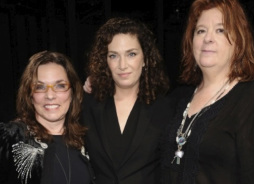 Torrential rains left calf-deep puddles at the intersection of 42nd St. & 8th Ave. on Monday afternoon, and for a while everyone who came into the lobby of Playwrights Horizons just dripped for a bit. I squish-squished down the stairs to the restroom where several of us tried to pat our exposed parts dry with paper towels, then squish-squished back up for this year’s iteration of the lovely Lilly Awards: the day when the women playwrights honor their own and anyone else they feel like honoring. The brainchild of playwright/activists Julia Jordan, Marsha Norman & Teresa Rebeck (pictured above), the Lillies were invented to acknowledge people whose work was consistently overlooked; to right a wrong; to say, “thank you, you rock” to people who make going to the theater worthwhile. And as the awards have moved from their infancy to toddlerhood, they are taking off running, with a swagger, no less, with a character, a style, and panache of their own. They no longer exist as a reaction, but as their own ecosystem, and an annual fete that’s a loud celebration. I sat, a small puddle collecting underneath my seat (from the rain!) closer to stage right, and waited to see who’d be sitting in the semi-circle of chairs onstage, admired the massive bouquets of lilies at either end of the chairs, and waved at and chatted with nearby friends. The auditorium had looked a bit sparse as we approached the 6 o’clock start, but suddenly blossomed to capacity with damp, happy people. Then the chairs on the stage filled in, and Teresa welcomed us, and handed us over to Lisa Kron for the Benediction. Lisa is a great American playwright & performer, but she could totally have a side career as a toastmaster. If you’ve ever seen her emcee an event, or give a speech, you won’t forget it, and probably find yourself quoting it the next day. She promised us a moment of despair, some crankiness, and that she would end on a positive note, and delivered on all counts, reminiscing about her college days in which she was deemed a “character actress” which, she said, is code for “lesbian.” Then she came to NYC and recalled seeing the Split Britches company (pictured below): Peggy Shaw, Lois Weaver and Deb Margolin as a moment when her life “pivoted” in a direction it’s followed ever since, and she urged the assembled to challenge institutional thinking, and received wisdom, predicted that one day she might call someone a “dildo,” and concluded with: “Welcome to the Lillies, Amen!” Julia Jordan gave a brief history of the awards, and the progress in getting mainstream theaters to produce plays written by women. It’s up to around 30%, she reported, though statistics like that, I will point out, are but the tip of the iceberg, and rarely include the huge amount of work by women done by independent theaters and solo artists. As someone whose work, and the work of most of my friends is produced mostly in independent venues (and frequently self-produced), I appreciate & hope that the rising tide will lift all the boats, but in my world, parity is seen far more often than it is further uptown. Peggy Shaw has never made it to Broadway, but she’s one of the most important and influential artists in American solo and independent theater. Lisa Kron saw her perform at WOW, which still exists, and still incubates new work by women, as do spaces like La Mama (which was mentioned at the Lillies) and Dixon Place and HERE, also founded & run by women (Ellie Covan and Kristin Marting). I’m just saying that looking downtown & across the river yields a garden of wildflowers that complements the Lillies. Marsha Norman reported that the Lillies are increasing their reach (and grasp) by sponsoring readings of new work, and in this, their fourth year giving out prizes that are “not just medals.” Then she recounted how, since their founding, many people have helpfully pointed out that Lillian Hellman (the Lilly for whom the awards are named) “didn’t like women,” and indeed there is a famous quote in which Hellman said she was a playwright and a woman, but not a woman playwright. This led to a recurring theme of the event…women talking about how isolating it was to be the only woman in a room full of writers, and comparisons to dogs (used as a metaphor more than once), and led to a goal of the ceremony: Not to apologize for, but to celebrate Lillian Hellman (pictured below). 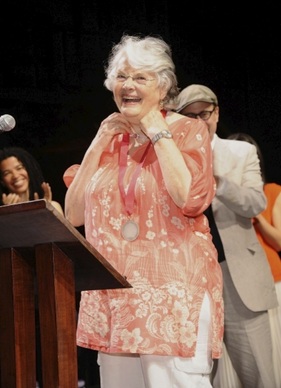 Playwright Neena Beeber came to the stage to present Jessica Hecht the Greta Garbo Award in Acting. Hecht spoke movingly from the point of view of an actor who wants to work with a playwright again and again, and sometimes must wait years between roles before getting a chance to return to collaborate with a fellow artist. Then actor Terry Kinney, natty in a 3-piece suit and cap, with a lovely blue tie ascended the stage to speak about Lois Smith (pictured above) with great affection and respect, and to present her with a Lifetime Achievement Award for acting. Smith appeared to be taken completely by surprise by the award, but with the aplomb of a great actress (and ordained minister!) she thanked the Lillies and remarked that sometimes the greatest life lesson is “just paying attention.” And she complimented the organizers for “bringing about the change they described.” Composer/performer/percussionist/sound designer David Van TIghem came to the podium and fooled around with the microphone, because he was there to present the first Seriously Stunning Sound Design award to Jill du Boff. The Lillies have made it a practice to honor the women in the technical, production and management aspects of theater, and this kind of openness, it seems to me, is one of the differences between the closed ecosystem that represents so many awards, and is the difference between “congratulations to us” and “congratulations to us all.” 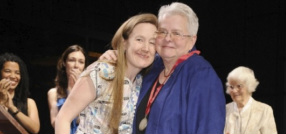 Sarah Ruhl (pictured above, with Paula Vogel), who won the very first Lilly, was then called to the stage to present the latest one to Paula Vogel. She cited just some of Vogel’s achievements, her activism and generosity, told us how she has taught and inspired so many playwrights, and presented her friend and mentor with the beribboned Lilly medal. Vogel addressed Marsha Norman as her own inspiration, for letting her know “that a woman could open the door, AND leave it open for the next one to come through.” She said she feels the theater has become more enriched and deeper because “we’ve learned to love each other” and that her own life has been profoundly changed by the women and men in her workshops, and how much she has learned from their “profound journeys.” Then Mandy Greenfield of the Manhattan Theatre Club presented the next Lilly to Julie Crosby, artistic director of The Women’s Project & Productions, and Crosby spent a few moments talking about the renaissance of the company, both from an artistic and management standpoint; telling us that in its 35th anniversary season, the theater is “solvent” and that Time/Warner has committed $10,000 per lab artist for their playwrights and directors’ labs, and that Mayor Bloomberg has also become a sponsor. She told us that 84% of the Project’s income goes back to artists. Which is a huge institutional achievement, and here I am the fly in the ointment, but I will point out that with that kind of support, the Women’s Project should drop the $20 fee it charges to APPLY to its playwrights lab. The fee applies a de facto penalty on women who start out in the American economy making less than men, who may have crushing student loan debt, or a family to support, or who just aren’t lucky enough to have been born middle class, or have somehow lost that status. I’ve had email exchanges with the people who run the program, in which the responses run along the lines of what you always hear when you argue against charging a playwright a fee to have her work read: well, we have administrative costs. We have to pay the screeners. This is only a fraction of what it costs to run the program… And as someone who’s worked both in the administrative and receiving end of the non-profit arts, and written plenty of grant proposals, my response is: it’s not the playwrights’ responsibility to fund a program that’s there to develop playwrights for a company that has a mission to develop new work. Like the lottery, submission fees are the equivalent of a “poor people’s tax.” End of (essential) digression. 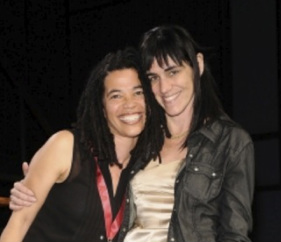 Marsha Norman, with great pride & joy in her former student, presented the next Lilly, the “Welcome to the World” award to Laura Marx, whose play “Bethany,” presented by The Women’s Project, was a much remarked-upon and well-received debut production for her. The outstanding director Leigh Silverman came up to present a Lilly to Tanya Barfield (both pictured above), for her most recent work, the critically acclaimed “The Call,” which opened on Broadway this spring. The award was fittingly titled: “The Hang in There, It’s the Middle of Your Career, We Need More of Your Plays” award, and was accompanied by one of the “surprises” promised by the organizers. Teresa Rebeck announced that she’d been approached by producer Stacy Mindich, who wanted to create a commission for a woman playwright. And while Barfield was still standing there, they gave her a a $25,000 commission for her next play. Barfield was overcome with emotion, and the playwright said a few deeply-felt words about her life as a playwright, which includes working a full-time job and raising children, and how much this means to her. 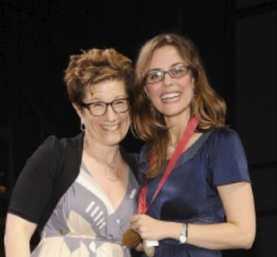 Lisa Kron then asked someone to hand her her wallet…and proceeded to present the next Lilly to director Lear de BIssonet, for her direction of Brecht’s “The Good Person of Szechuan,” which had an ecstatic, sold-out run at La Mama earlier this year, and will move to the Public this fall. Then came the award that’s become a highlight of the event, which answers the question: “Who is this year’s Miss Lilly?” And the answer was Garry Garrison, director of Creative Affairs for the Dramatists Guild, who donned the traditional sash & tiara, received a bouquet, and was proclaimed an “honorary woman” for his efforts. Then another surprise hit the stage in the form of Cusi Cram, who announced that the Lillies are joining forces with the new prize for women playwrights: the Leah Ryan Fund for Emerging Women Writers. The prize, which is now up to $1,000 and a staged reading of the selected work, was awarded to Jiehae Park, for her play, “Hannah and the Dread Gazebo,” which had its reading on June 4 at Primary Stages. 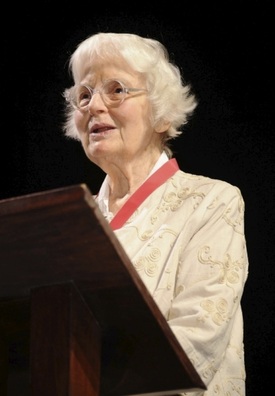 The Lillies then invented themselves again by awarding a special prize to Denise Scott Brown (pictured above), a legendary 81-year-old architect, and husband of the Pritzker Award-winning Robert Venturi, her design partner. In 1991, the Pritzker, the top award for architecture, was given to Venturi alone, though he and Scott Brown had been partners in every way as architects. Scott Brown’s deliberate exclusion from the prize recently prompted students at Harvard’s School of Design to start an online petition to recognize her for the work she did in partnership with her husband. The petition now has over 13,000 signatures, which Scott Brown noted is “a lot for architecture.” (It’s a lot for theater, too). Scott Brown then proceeded to give an eloquent talk that’s worthy of a blog post of its own; she immediately connected the treatment she’d received in her career with the “dispossession” that is often felt by women playwrights; she spoke of growing up with an architect for a mother, and how she spent the early part of her career shocked to find out that she was one of the few women in the rooms full of architects. She even wrote an article called “On Sexism and the Star System in Architecture.” She has always gone her own way, she said, and the rewards have been “ecstasy, and my own self-respect.” 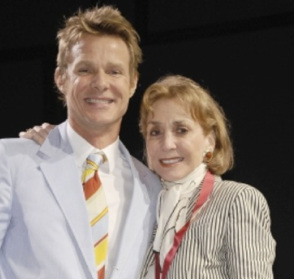 The final award of the program was to another kind of architect: to the woman who created one of the most influential and valuable awards for women playwrights. When Mimi Kilgore (pictured above) lost her sister, Susan Smith Blackburn, she created a Prize in Susan’s honor, which is now given annually to recognize women “who have written works of outstanding quality for the English-speaking theatre,” and which awards $50,000 annually to the Finalists: $25,000 for the top prize, and $25 each to the finalists. In addition, the Winner receives a signed and numbered Willem de Kooning print made especially for the award. The award was presented to Kilgore by her son, Alex (also pictured), who spoke eloquently of his mother’s dedication to plays written by women, and when she accepted the medal, Kilgore said the award has “given my life a purpose and a strong sense of direction.” Then all the women in the audience who’d won the prize, been finalists, or served on the board were asked to join the Kilgores onstage, and the amount, range, and diversity of the talent was breathtaking, and the perfect final image to take away from the celebration. As we slowly made our way across the street for the afterparty, I thought of the work that has moved me recently, and how much of it was made possible by the long walk uphill that so many women and men have taken, that’s still going on, that one day may end at a level playing field. In the last month (which included a stint at the International Dublin Gay Theatre Festival), I’ve been privileged to see new work from Vickey Curtis, a wonderful Irish playwright & director; the Flux Theatre production of Johnna Adams’s “Sans Merci”; an outstanding solo play, “No Need for Seduction,” written & performed by Victoria Libertore, with a commission from Dixon Place; Mariah McCarthy’s site-specific “Mrs. Mayfield’s Fifth-Grade Class 20th Reunion” produced by Caps Lock Theatre; and the latest version of “The F*cking World According to Molly,” a solo show created by Andrea Alton at the Terranova Collective’s Solo Nova Festival. This weekend, I'm off to the opening of my play, "Grieving for Genevieve" at the Venus Play Shack in Laurel, MD, an independent thatre that's the brain & love child of Deb Randall...one of the many women who have spent their careers making it possible for women theater artists to have a place, not just in New York, not just in the institutional, mainstream theatre, but in every city, town and village where there's someone willing to look at an empty space and see a stage, stay up nights writing grants for the local arts council, build an audience that knows and wants more work from women. That put me in mind of people like Staci Swedeen and her Flying Anvil Theater in Knoxville, Dewey Scott-Wiley & Larry Hembree, with Trustus in Columbia, SC, Marj O'Neill Butler and The Women's Theatre Project in Florida..and so many more, more than I could name, which is a good thing. And I won't ever stop trying to find them and thank them (and, of course, send them my work). We are the Lillies of the Field: see how they grow; we do toil and spin, and we are all the better for it. I was in freakin' Dublin again, my home-away-from-home, representing NYC for Emerging Artists Theatre, with my play, "That's Her Way," at the International Dublin Gay Theatre Festival (for the fourth time). And of course I blogged about it here:
http://eatinireland.blogspot.ie/ ...and then we came home! “When I was a little girl, there was this wonderful show on TV.” That’s the first line of my play, “The Adventures of…” As a playwright, it’s taken me downtown, midtown, Provincetown (3 times) and to Dublin, Ireland. It’s never had the same cast for more than one production, a streak that remains unbroken in 2013. Last Wednesday, two days before the show was to open (again) in Provincetown, I got an email with the news that our leading lady had a family emergency. And I would be going on in her place. After thinking about it for a few seconds, I realized it was the best solution. I wrote the play, I’ve seen it more than anyone else, and the character is essentially an adolescent and adult version of me. As Tina Howe says: “It’s all true, but none of it happened.” My play had taken me back onstage. 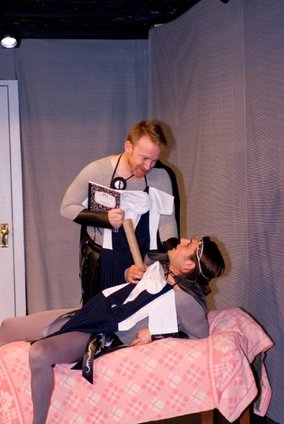 Will Clark and Nick Lazzaro, in the EATfest production. To begin well before the beginning, I came to New York to act. After a brief stint at the American Academy of Dramatic Arts, I was not asked back. I kept up with acting classes, and made the odd appearance in a showcase or two, and in summer stock. I was determined to stay in New York, and find a place in the theater and started fumbling toward what’s become a body of work as a playwright. Fast forward a number of years, and I’m doing my second 24-hour play festival at Wings Theatre. I liked the horror and excitement of it so much the first time that when they asked me back again, I said yes. We followed a standard drill: you pull things like settings, and actors and director out of a hat, and have words or phrases you must incorporate into the text. I ended up with: birthday cake, obstinate, and gymnastics; 3 actors, one of whom was my summer stock buddy, who’d since been in one of my full-lengths; a director I knew was quite good; and a setting: ATLANTIS, 1 MILLION YEARS, BC! (THANKS, Peter Bloch). Oh, and we also had to mention Clay Aiken. I muttered to myself on the train, pulling up, then tossing aside, ideas for plots, characters, how the hell to show Atlantis…briefly considering setting the whole thing underwater…trusting that I would get the idea I needed by the time I got home. Back when I was a sportswriter, I’d walk into the newsroom after a game, take a look at the clock, and know that by deadline, I’d have a story. It didn’t block me, rather it gave me the confidence to begin, because I knew I’d be done in time. At a certain point on the walk to my apartment, just as my building came into sight, I got the first line, and where it fit, and the idea for the rest of the play, and for the characters in it. I got home, I wrote it. When you’re doing a 24-hour play, you have to write with your id, rather than anything above it. Go deep, go personal, go mad. I finished it and had it at the theater by 10am (with mention of Clay Aiken in a totally organic way). I handed the scripts to my director and leading lady…but the other two guys in the cast were nowhere to be found. (Later we’d learn that…well, I forgot why they didn’t show up. What mattered is that they didn’t. I remember their names to this day). We drafted an actor from another play, and everyone got on the phone to see if we could round up a third. We briefly discussed me going on in the third part, which I discouraged. I went to the church across the street and lit a candle. And when I came back, one of the producers had found a guy in Jackson Heights. 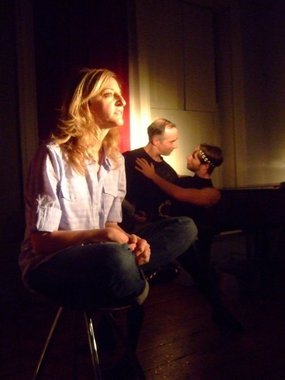 Jamie Heinlein, Jason Alan Griffin and Hunter Gilmore in the Dublin production. The cast rehearsed all day, and I asked the director if we could go on last, so people would have more time to learn their lines. And…they did it. The audience loved it, and laughed so hard at the Clay Aiken reference that the actors had to hold. I knew I’d written a decent play, possibly one of the better things I’ve written. This unnerves me, because it was written in a blinding flash, in such a random manner. But I’ll take it. And hope to write something as good or better that’s…longer. I did a little tweaking and submitted it to Emerging Artists Theatre and it was accepted for an EATfest…with two out of three new actors. I submitted it to the Dublin Gay Theatre Festival in tandem with a piece by J. Stephen Brantley, in part because he had two men who could double in the male roles in my piece. We were accepted, and went to Dublin with two new actors, and the original leading lady. 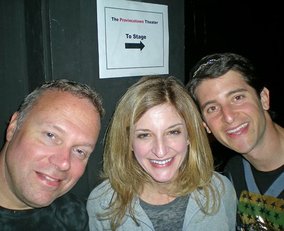 Mark Finley, Jamie Heinlein and Lee Kaplan in the Women's Theater Festival production in Provincetown. I applied to the Universal Theatre Festival in Provincetown, and we were accepted, but our leading man had moved away, so we picked up another new actor. We were asked to come back the next fall, and this time, we had to bring along a new juvenile. The play was picked up by a theatre in San Francisco, and a friend of mine who went to see it said it was done very well; it’s on YouTube now. We were invited back to Provincetown for the final Universal Theatre Festival, a “best of,” and…we needed a new actor. I remembered the guy who came in from Jackson Heights for the first performance. He was available, and we were good to go. And then…I was in the mix. I can certainly be in front of people; I host a reading series, and appear on panels, and read my own work at the drop of a hat. But I haven’t set foot onstage as someone else since Ed Valentine’s “Women Behind the Bush,” in which I was a homicidal society matron (with one line), that we did all over town one summer. I printed out the script and highlighted it and started trying to learn it on the subway home. And in the car on the way up. I got a wonderful note from one of the other actors going up (who was taking the other part played by the actor who had the emergency). It was sweet and supportive, and she said she’d sit in for me at tech and not to worry, everyone had my back. About halfway to Provincetown, my wife realized that we were opening that night (she’d thought it was Saturday, and wondered why I was so frantic). We got there midafternoon and I rehearsed with the guys for about an hour, then went to find something to eat (not an easy thing in Provincetown on a January afternoon). I’d bought a couple pieces to wear as my costume, and accessorized a bit. I had the cut-down sides in my notebook (a handy prop I’d thoughtfully written in the original script for just such a purpose), but I didn’t need to refer to it. There was no way I could, or would, imitate Jamie Heinlein, the real Maggie. Instead, I took a deep breath, and looked at the audience, and just tried to live for a few moments, truthfully and loud enough to be heard, on the stage, with my own words. If I did it right, it would be enough. It was.  Memo, me, and Mark Finley at the Universal Theater Festival, Provincetown, Jan. 2013 I was very tired when it was over…and remembered I had to do it two more times. I was surprised how quickly the routine of going to theater early, putting on costume and makeup, and getting ready came back. Waiting backstage with the other actors, warming up and listening to the other plays, and eating fudge. I think I might have said “yes” to the whole thing because of the large pan of fudge I knew was backstage. Then it was over, and I could take off the red hi-tops I’d bought for the character, and put them on as myself when the weather gets warmer. The festival evaporates quickly…the out-of-towners have to drive a long way that night. There's no lingering over good-byes, or marveling over what we’d done. We were all on our way within minutes of the final bow. My wife and I stayed over one more night in Provincetown, and drove back the next day, still tired, relaxed, and tearing up as we listened to the President’s inaugural address on the radio. I have always thought that play could be longer. Whenever we rehearse it, I think of the ways it could be expanded, maybe even into a full-length. And having played it, I learned new things about it (and the writer). It hit me harder than ever that I want to expand this one. I know where I’d put the new scenes and what should happen when. If I do this, as I suspect I might, I promise, I will never, ever, go onstage in it. Acting is HARD.  We'll all over in Ireland and shit, and I have been posting to the blog I created many moons ago (2009?) when we first played the International Dublin Gay Theatre Festival. Read all about it here. I’m so glad I’ve had a chance to blog about the Philadelphia International Festival of the Arts. At the start, it was a list of names and events in the town I was born in, and visited too infrequently in recent years. By the end of the festival, it’s become a garden of revived memories, as well as some new names and faces I’ll be following (and going to see in the future), as well as a chance to talk and write about some of the things I like best: playwrights, composers, gay artists, theater companies, new work, and of course, the Phillies. Here are some of the things I’ve learned and loved AND notes on shows that will continue their runs past the end of the Festival.
Ed note: Kathleen Warnock received financial compensation for this post from PIFA (Philadelphia International Festival of the Arts).
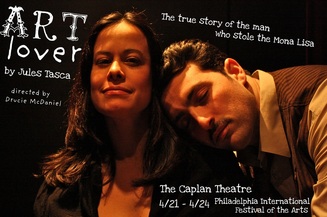 When I was producing with En Avant Playwrights, we put on a play by Maz Troppe called “How Mona Lisa Got Her Smile.” (It had something to do with Leonardo cross-dressing, a strongman who had lost his mojo, and some purloined diamonds. But I digress…) In fact, the Mona Lisa has inspired many other works of art since da Vinci painted her in 1503 (or ‘04). She’s been the object of speculation, obsession and fascination since her creation. And, in Paris during the time that provided the inspiration for this year’s Philadelphia International Festival of the Arts (1911-1920) she disappeared for two years, spirited out of the Louvre by a worker under his coat. Authorities were stumped, and even arrested French poet Guillaume Apollinaire, who tried to implicate Pablo Picasso, who was also brought in for questioning, but both were later exonerated (thank you, Wikipedia!) The theft of the world’s most famous painting, on August 22, 1911, continues to inspire: there are three events at PIFA that touch upon or revolve around her kidnapping: on April 9, Astral Artists presented “Who Stole The Mona Lisa?,” a multimedia experience; now running at the Arden Theatre is Rogelio Martinez’s “Wanamaker’s Pursuit,” (through May 22) in which the denizens of Paris’s art scene in the Belle Epoch ponder her theft; and Jules Tasca has written a play about the man who took her home with him, “Art Lover,” at the Caplan Studio, at the University of the Arts, 211 Broad Street, April 21-24. Tickets are $5-$10.  Leonardo da Vinci “I had always wanted to write a play about the theft of the Mona Lisa,” said Tasca. “But where’s the market for that?” Tasca, a prolific playwright who has written, published, and produced many plays, including Live Drawing, about the relationship between Leonardo daVinci and the Mona Lisa. When PIFA was in its formative stages, he attended preliminary meetings, and found that the period they were focusing on was when the play he wanted to write was set. He wrote it, submitted it to the festival and it was accepted. “I’m producing the play myself,” he said. “It takes over your whole life.” I know, Jules. I know. “But it’s a fun experience. We’ve got the flyers, the postcards, we go up April 21st for 6 performances. We have the theater for a week. We’re all hoping to break even.” (Godspeed, brave playwright/ producer! Been there…done that…have the props in my storage unit.) 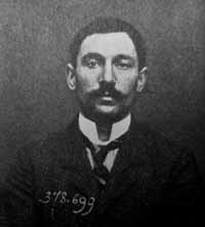 Vincenzo Perrugia There hadn’t been a play written about art thief, and as Tasca researched it, he went over the transcripts of Vincenzo Peruggia’s trial. The reason generally given for the theft is either that the Peruggia was a patriot who wanted the painting returned to Italy, or that he may have been part of a plan to sell copies of the missing painting as the original. Tasca found another motivation for the thief. “The thing that really made it go,” he said. “Was the fact that he [Peruggia] took up with a streetwalker, and according to the trial transcript, she had a striking resemblance to the Mona Lisa. It’s the Madonna/whore syndrome, literally. He had the Mona Lisa when she wasn’t there. When he was there, he was screwing this girl who looked like the Mona Lisa…the idea and the real. He’s living this fantasy life for almost two years. If this was just a play about the art theft, it would have been interesting; this gave it a whole new layer.” Tasca went to work and said the play progressed quickly. “It wrote itself in a sense,” he said. He showed the script to director Drucie McDaniel, and they cast actors Alex Mandell and Illiana Hubbard as Peruggia and the streetwalker, Mathilde.  Following some of the performances, Art Historian Nancy Davenport and psychologists, Fabian Ulitsky and Jeffrey Wolper among others will join the cast in talkback sessions about the play and the real events and people that inspired it. From 1911-1913, Peruggia kept the painting hidden in his Paris apartment, then returned to Italy with it. He was finally arrested in Florence, and was hailed as a patriot by many of his fellow Italians, for returning the painting to its “homeland.” After its recovery, the painting was exhibited in Italy before being returned to the Louvre. Peruggia served six months in jail for the theft. The Mona Lisa continues to reside (and inspire) at the Louvre. Ed note: Kathleen Warnock received financial compensation for this post from PIFA (Philadelphia International Festival of the Arts). 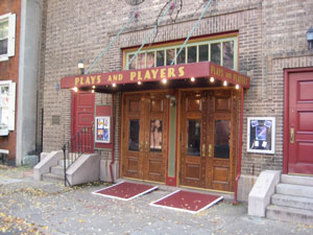 Plays & Players' homestage, on Delancey St. in Center City What’s better than a 72-hour play? Well, a 24-hour play, but then I’m hardcore. In fact, the “bake-off” (a term used for a writing exercise popularized by Pulitzer Prize-winning playwright Paula Vogel), in which dramatists are given several “ingredients” they must incorporate into a play that has to be written in 72 hours or less, has become a popular genre-within-the-genre of live theater. There’s nothing like the surge of adrenalin that hits a playwright when you get your puzzle pieces and must fit them together with the clock ticking into a real play. This year’s Philadelphia Bake-Off has led to the development of two new plays being presented at the Plays & Players PIFA New Play Festival, running from April 20-24 at the Rendell Room of the Kimmel Center. Plays start at 6pm, and admission is free, but reservations are highly recommended. (Note that the event is not suitable for children). Plays & Players is the group organizing for the event, as well as celebrating the 100th anniversary of its founding in 2011; it was born right at the start of the time the Philadelphia International Festival of the Arts is celebrating: Paris from 1911-1920. 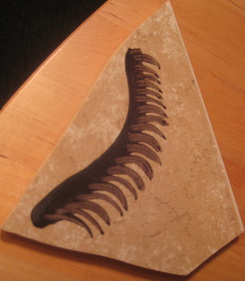 One of Isaiah Zagar's ceramic tiles (ingredient #3). “We became involved in PIFA the same way nearly everyone in Philadelphia did,” said Daniel Student, the company’s Artistic Director. “The Kimmel Center really reached out to the community and invited them to participate. There was an application process that involved proposing the performance you wanted to do, and it was stressed that each performance needed in some way to fit the theme of the festival. We had run a New Play Festival for two years during March at our theater, and when we heard that the theme of PIFA was going to focus on innovation, we couldn't think of a better fit!” Plays & Players has hosted the annual Philadelphia Bake-Off, since 2009, in collaboration with PDC (Philadelphia Dramatists Center), a service organization for Philadelphia playwrights. Each year, P&P posts three "ingredients" online and give playwrights 72 hours to craft new plays from them. “Then we gather for a pizza party with actors and read as many of the plays written as we can,” Student said. “Each year this event brings together veteran and first-time playwrights alike.” PDC members in this year’s event were invited to submit their plays to the PIFA New Play Festival, and two plays were selected for developmental rehearsals and public staged readings in the festival. This year’s ingredients are: 1. Riots -- That is, artistic riots, or riots precipitated by artistic daring, or perhaps artistic demagoguery, or artistic thumbings of the nose. (suggested by Barbara Silverstein, Artistic Director of The Pennsylvania Opera Theater) 2. "That is probably the most repulsive thing I've ever seen." (suggested by playwright Sheila Callaghan) 3. two ceramic tiles, created by Isaiah Zagar, an award-winning mosaic mural artist: 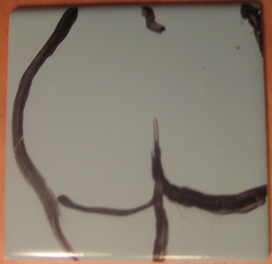 Isaiah Zagar's second 'ingredient' tile. Playwrights Joy Cutler and Greg Romero were selected to have their work developed for PIFA. Cutler‘s work has appeared in all three Philadelphia Bake-Offs. Romero has been selected for the first time. They are two of the three playwrights in residence in a pilot program this year, called the PDC Residency at Plays & Players. Quinn Eli is the third P&P playwright in residence. They were chosen to spend 14 months at P&P, in a program focused on developing them as artists, rather than on developing specific work. “It is playwright-driven programming,” Student explained. “This year, on request of the playwrights, it has morphed into three different aspects: 1. Meeting and workshopping with artists ranging from landscape architects, puppet masters, and a local visual arts legend, Isaiah Zagar of Philadelphia's Magic Gardens fame. 2. Closed door developmental readings upon request from the playwrights. 3. Full weekday usage of our space for personal development or time to play with actors to experiment with their work.” Romero’s play is Marilyn Monroe Has Sex for the Last Time with Groucho Marx. It’s directed by Rowen Haigh. Cutler’s play is The Stormy Hanky, directed by Cara Blouin “Marilyn Monroe is a daring and at times disturbing play about the intersection of sexuality and obscenity,” Student said. “It puts its audience into the position of voyeur as we watch a woman role-playing as Marilyn Monroe and a man role-playing as Groucho Marx engage in various acts of carnal lust.” Cutler’s Stormy Hanky takes an absurdist look at the anarchy that emerges when one of the characters inadvertently brings "back the 4th primary color". The artists riot and all colors and shapes in the world no longer hold their original integrity. “These plays will explode from the page to the stage, inspired by its ingredients that spoke of artistic riots, repulsivity, and sexuality in visual art,” Student said. “While we cannot promise all audiences will like them, we hope that some people will love them and will be inspired by them. As PIFA reminds us, art is SUPPOSED to challenge. We need to encourage our new playwrights to experiment and push the boundaries of art. We hope this evening will accomplish just that.” 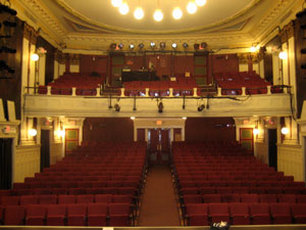 Interior of Plays & Players Theatre. The PIFA presentations are just part of Plays & Players’ current season. The company will present 4 mainstage plays (both revivals and new work) from June through October this year, as well as Late Night and family programming, and hosts other Philadelphia-area companies throughout the year. Its home stage, Plays & Players Theatre, at 1714 Delancey Place in Center City, was designed and constructed in 1912 by Philadelphia architect Amos W. Barnes. Beginning as The Little Theatre, it has also been known as the Delancey Street Theatre (1920) and The Philadelphia Theatre before being known as Plays & Players Theatre. Ed note: Kathleen Warnock received financial compensation for this post from PIFA (Philadelphia International Festival of the Arts). |
Kathleen W.
Writer, editor, curator, Ambassador of Love. Archives
May 2014
Categories
All
|
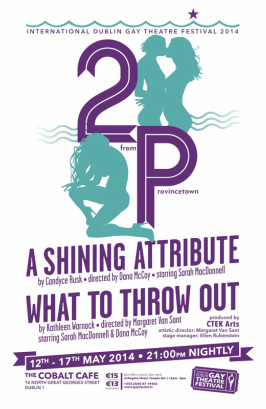

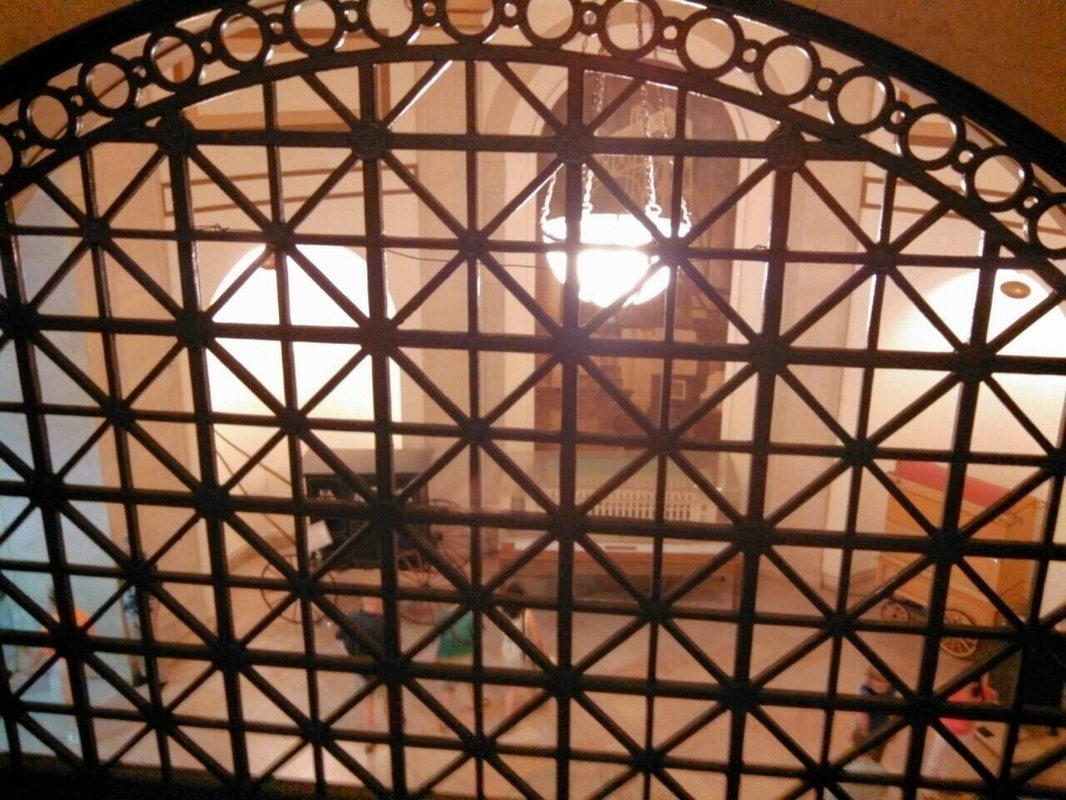

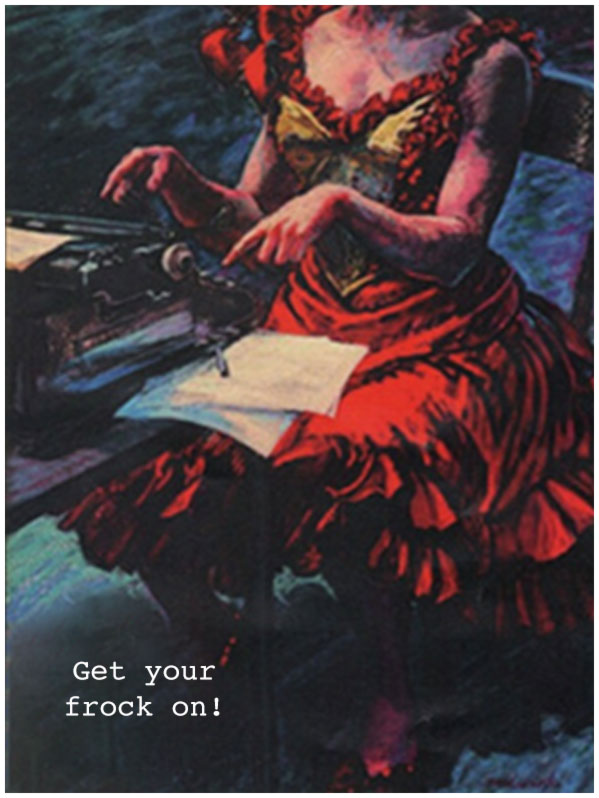
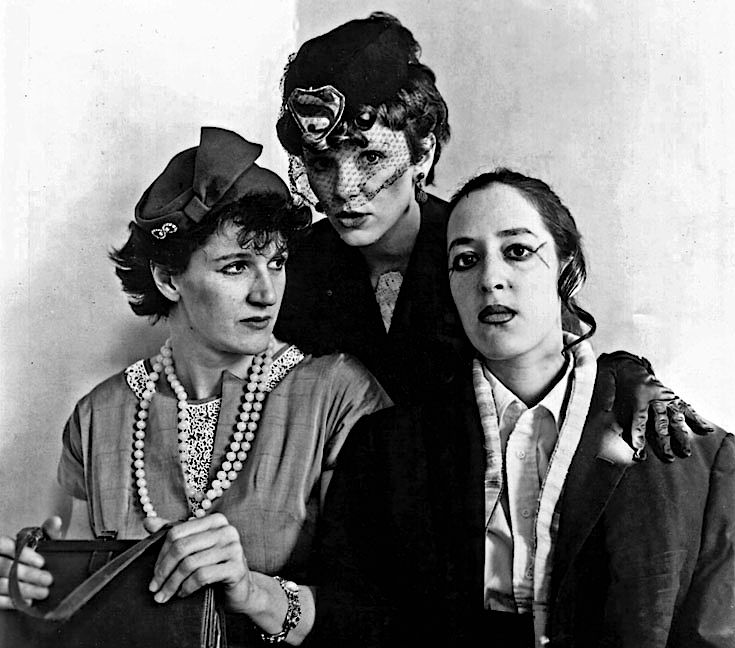
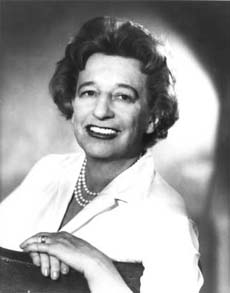
 RSS Feed
RSS Feed
